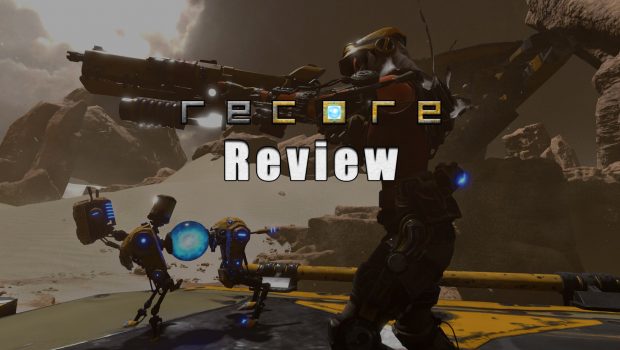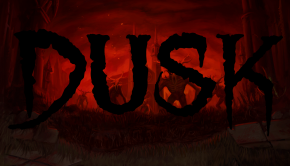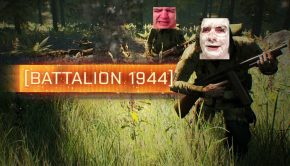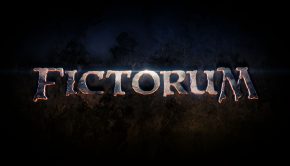Review – ReCore
Game length alone is something that can’t be used to determine whether a game is good or not, and ReCore is a shining example of this statement. Usually, for me, when a game is longer it tends to be that I enjoy the game more. More often than not, more time can equate to lots of great content or at least some cool concepts. Unfortunately, ReCore lacks both of these things and when I found out the game had more to it when I had thought I reached the end, I was quick to let out a loud groan that couldn’t properly express my frustration. Yes, this action-adventure game is bad in almost every way possible.
For starters, ReCore is one of the worst ports I have ever had the displeasure of playing. On the surface, the graphics options look to cover a lot of the bells and whistles that someone would want to control, but they don’t seem to work all too well. If someone has any intention to alt+tab while playing this game they will have to be okay with playing in a window that is a smaller resolution than their screen. This is because almost every time I alt+tabbed the game froze; it just completely stopped working. Furthermore, if it runs in a window, 1920×1080 doesn’t seem to be supported because every time I set it to this resolution the window size didn’t change. It would just stay at 1600×1024. The options of framerate consist of 30, 60, and Maximum. At first, I hoped that “Maximum” meant “Unlimited,” but I quickly discarded that idea because I never went over 60 FPS. In fact, despite the fact that I have an Nvidia GeForce GTX 960 when the recommended graphics card is a GTX 780, I still lost frames in different areas of the game. The picture below is an example of an area I lost frames in. There were particles blowing across the screen and the game just failed to keep up a stable performance. Luckily, there aren’t many areas like this. One last notable thing about this port is that it has 4 sensitivity sliders. They control both axis for zoomed in and not zoomed in respectively, but they don’t have a number accompanying them so matching up sensitivity values is done by just eyeballing it.

The fun doesn’t stop there, though, because ReCore is also a buggy mess. I’ve had an interesting array of issues, and because the game insists on taking up a lot of time to complete, I got to witness these issues repeatedly. Dungeons in ReCore are the main way to progress through the game; these are split up into main and side dungeons. Main dungeons move the game’s story along, but they are poorly designed. Side dungeons seem extra at first, but nearing the end of the game I realized that they were almost necessary to complete the game in an acceptable time. Four rewards wait for the player at the end of these side dungeons, but they have to be earned by completing the three objectives given at the entrance. These three objectives are the same for every single side dungeon, but what’s important here is the fact that I had my fair share of dungeons break on me. They broke in ways that made it so I couldn’t complete some of the objectives forcing me to restart the dungeon. Not only that but one of the main dungeons broke by failing to load the next room, this is shown below. The most infuriating bug that I encountered though was when the final boss just blew up, and because this wasn’t the intended way to end that boss fight, I was forced to restart. Bugs in this game just seemed to get worse the further I got.

With performance out of the way, it’s time to dive into why ReCore is an awful game in terms of gameplay. From the get-go, combat is bland and boring. This is mainly because of the fact that the game aims for you when zooming in which effectively removes one of the largest elements of combat in a shooter. Sure, someone could elect to avoid aiming down sights so they are forced to control their aim, but I found that this felt pretty sloppy at times and your bullet spread was far wider compared to zooming in. Combat is pretty monotonous even with the party system that allows the player to have one AI companion out at a time. The player has no control over this companion save for telling them to use their “lethal.” This lethal is just a special move that is companion specific and, really, it just consists of pressing E every now and again. There is only one mechanic that I found myself paying attention to and that is matching my projectile color with the enemies’ colors. In doing this, I do more damage to said enemy making combat quicker, however, this is pretty mind numbing and only fresh for about ten seconds. The last mechanic of combat is found in the main character’s grappling device. When an enemy is low enough the player can press F to send out their grappling device and it initiates this kind of tug-of-war minigame. A minigame, mind you, that is used for almost EVERY aspect of this game. By winning this minigame the enemy’s fusion core is yanked out and put into the player’s inventory. These cores can be used to upgrade their companions back at home base. If a player decides not to use their grappling device then the enemy will drop a crafting item that can be used to craft equipment for their companions. This equipment is just armor pieces that change stats.
Combat isn’t the only poorly designed part as ReCore‘s level design is right up there as well. The dungeons are small and short and unbelievably linear. Main dungeons won’t stop holding your hand even when you finish them. Hand holding is done through this game’s incessant waypoint that will stop at nothing to guide the player to the game’s awful end. It’s ludicrous that a small scene of opening a door is played when I activate something but it still feels the need to place a waypoint on that door in case it wasn’t obvious enough. The waypoint is worse than a back-seat gamer that insists that they are helping, but they end up being annoying while getting in the way. Having a waypoint guide you through every part of a dungeon removes all mystery and hunger for exploration. Furthermore, from what I’ve seen, there isn’t any way to get rid of this anti-fun green diamond which really is a blight on this game.
Simplifying dungeons doesn’t only affect the exploration, but it kills any satisfaction derived from finally making it to the boss room. The rest of the excitement of finding a boss is effectively destroyed by the fact that bosses just seem to be larger versions of enemies you fight simply walking around the Overworld. No challenging or new mechanics are showcased through these large clones and that leaves a lot to be desired. Side dungeons don’t have a waypoint in them, thankfully, but they are so linear that there is no mystery or exploration to be found there either. You are either platforming from one point to another or you are in an arena-type environment until you clear out the enemies.

The side dungeons that consist of platforming along with the final dungeon were the only ones to capture my interest as the only thing ReCore has done well is movement. The movement of the main character feels nice and fluid and it makes platforming really enjoyable, but they seemed to only save these good parts of the game for unfortunately small areas. Some companions in your party help with platforming as well; for example, one of them lets you attach to specific tracks allowing you to traverse across any gaps that have these tracks nearby. There are usually a bunch of tracks close to each other with gaps separating them, so a player has to use the momentum that their companion gives them from running across this track to sail through the air to attach themselves to the next track. This specific mechanic isn’t used too often so I found it fun to do whenever I got the chance to use it. However, this leads to the next big flaw this game suffers from.
ReCore‘s party system continues to mar the already imperfect game by hindering the gameplay severely. Since companions have special traits certain areas of the Overworld require the player to bring along specific companions to take advantage of these abilities. However, there is a party limit and this causes issues. Dungeons are very upfront about what companions you can bring, and there is a place to switch out your party members at the entrance of every dungeon, but the Overworld is nowhere near as kind. I found myself, many times, exploring the Overworld only to get stopped by an obstacle that needed a party member I didn’t have in my current crew. There are five companions (one I never found) and there are only two crew slots. So when I was faced with this obstacle either I made the closest walk to the nearest transfer station to switch out members or I had to fast travel back to base to grab them and then come back. Transfer stations are littered around the Overworld, but they never seem to be nearby when you need them. If this happens once or twice, no big deal, but this happened to me so many times and each time it seemed to be a different obstacle.

At first, I enjoyed exploring the Overworld. It was really cool to see structures in the distance that I could actually run over to and explore, this is how most side dungeons are found because when you walk near one it gets marked on your map. It also had its fair share of platforming to enjoy. Unfortunately, it wasn’t long before I found myself wandering around the landscape later in the game and realizing just how small it was.
Near the end of the game I just wanted it to be over. I was so done with the repetitive fruitless grind that I was presented with. Problem is, the game wouldn’t let me finish it. The end of this game presented me with an idea so unbelievably absurd that all I could do was laugh. The final level was split into separate parts, and each part had a level and Prismatic Core requirement. Prismatic cores are similar to fusion cores except, instead of crafting, these are used as keys. Furthermore, these are collected from completing dungeons and some are found in different parts of the Overworld. Now, cores weren’t a problem for me as I had quite a few on me. By the last part of this level I did have to go look for some more but no harm no foul because I knew where I could find more. The level requirement is what boggled my mind, along with the fact that from a story standpoint restricted access to the last area didn’t make any sense.
My reasoning for why the level requirement blew my mind consists of a few different things. The first thing is the fact that I had gained entrance to the first floor of the final level by defeating a boss that was SIX levels higher than me. By this point in the game, I really didn’t even bother to look at my characters level anymore because it didn’t seem to make a difference. It feels like something that was tacked on last second just as another thing to restrict access to the end without wandering around the Overworld first. Each time I went up a level in this final dungeon, the level requirement increased by two which meant I had to go back outside and fight more boring enemies until my experience bar filled up. It should be noted that leveling up in this game doesn’t give the player anything new. Sure it boosts the stats shown, but I don’t know what that really means because when I was level 26 and I fought something that was level 1 it still took me about as long as it took me at level 1 to kill it. I turned to side dungeons to try and level faster. This tactic worked in getting me to explore more of their horrific level design, but I would have appreciated those dungeons more if it wasn’t for the fact that I had to go on a random scavenger hunt in the desert almost every time I wanted to enter one. Some dungeons need power units for them to open to the player, and of course those power units aren’t in their sockets when you come knocking. You have to go on a scavenger hunt for them and they are usually close by, but it’s still a huge annoyance. Not to mention that this is where I found myself having to travel to home base the most to switch out my party since the transfer stations are inside the dungeons.

The boring grind of reaching the level necessary to continue to the subsequent parts of the final level easily added at least two more painful hours to my play time. From a story perspective, these requirements made absolutely zero sense. There is a huge storm brewing and it’s supposedly threatening to tear apart the area you need to get to, but I guess it has time to wait for you to run around for hours to increase your strength. It kills any sense of urgency the game tries to create and makes a very intense moment a laughable one. This isn’t the only bad part of the story though as the story in general just sucks. It thinly holds the game together keeping the main character and player in the dark constantly. In fact, the only thing in this game that clears up the story are the audio logs that can be found laying around the world, but if a player just opted to ignore them then they wouldn’t have a clue as to what was going on other than the fact that there is a large desert planet with the main character on it, seemingly alone, and they are on a quest to figure out what happened to the world, which they would never really find out if they avoided picking up audio logs. Any dialogue in this game is poorly written and just so very dry, and the voice acting doesn’t do it any favors.
There isn’t much to say about ReCore other than that it is pretty awful. It’s an insult of a port and an even further mess of a game. Combat and level design is done very poorly and the only nice thing I can say about is that movement felt clean. The story leaves a lot to be desired, and it’s held back by awful choices that force the player to continue to experience the game’s awful design. It ends on a note that hints at a sequel, and after playing through this mess I have almost zero interest in finding out what this sequel entails.
Summary: A poor attempt at an action-adventure game that is riddled with horrible design choices accompanied by an even worse story. A sorry excuse for a port.







One Response to Review – ReCore